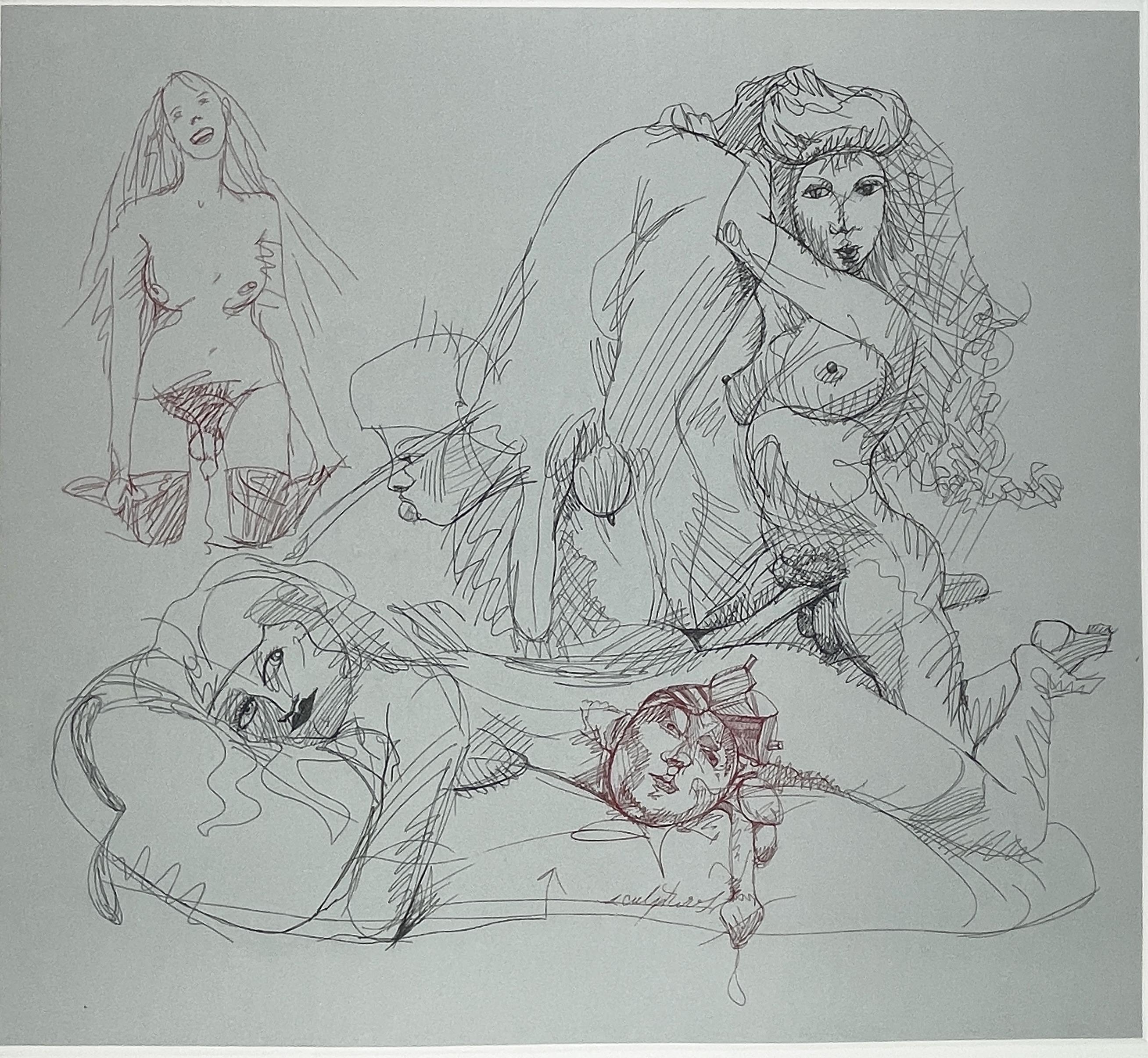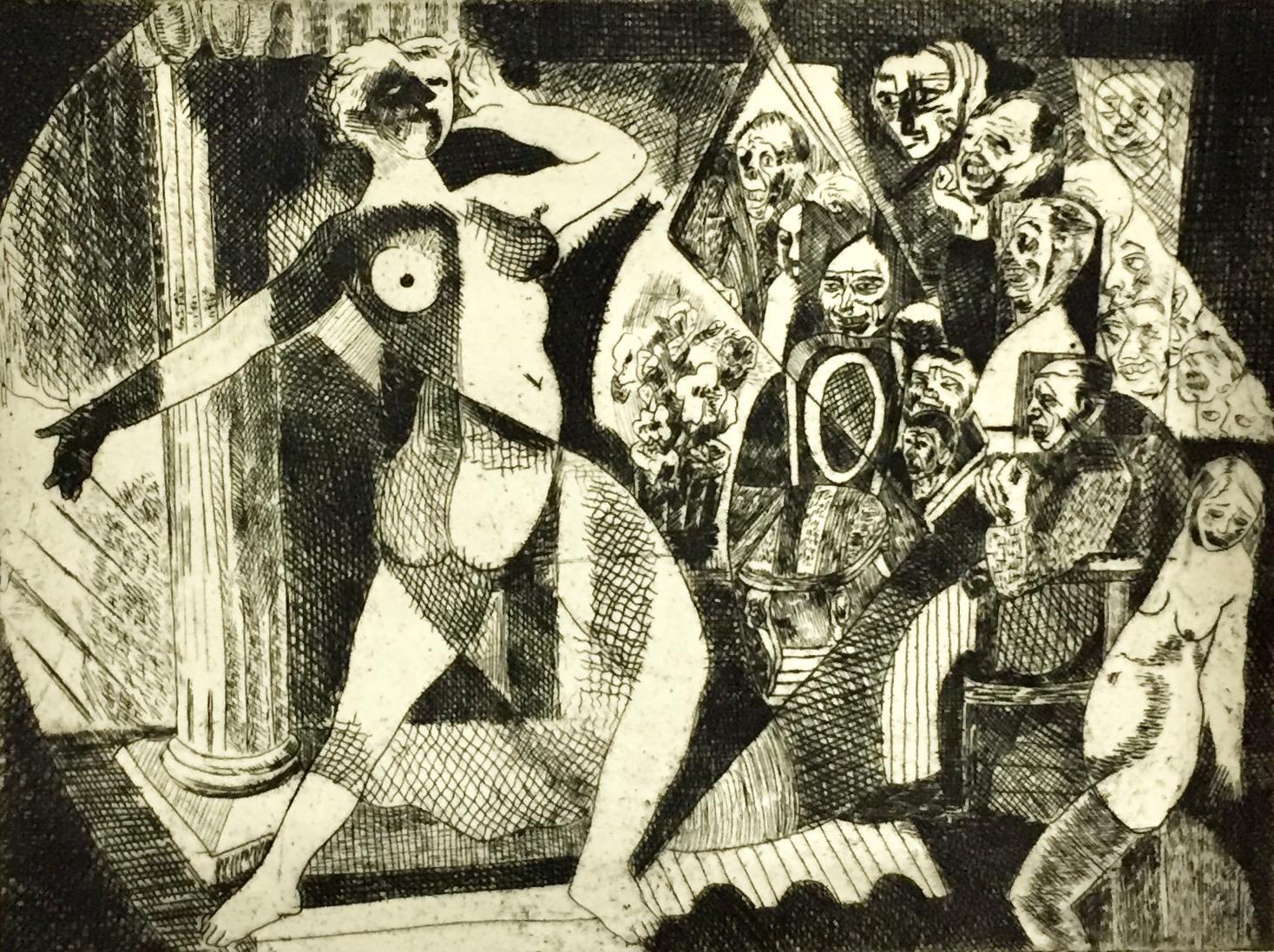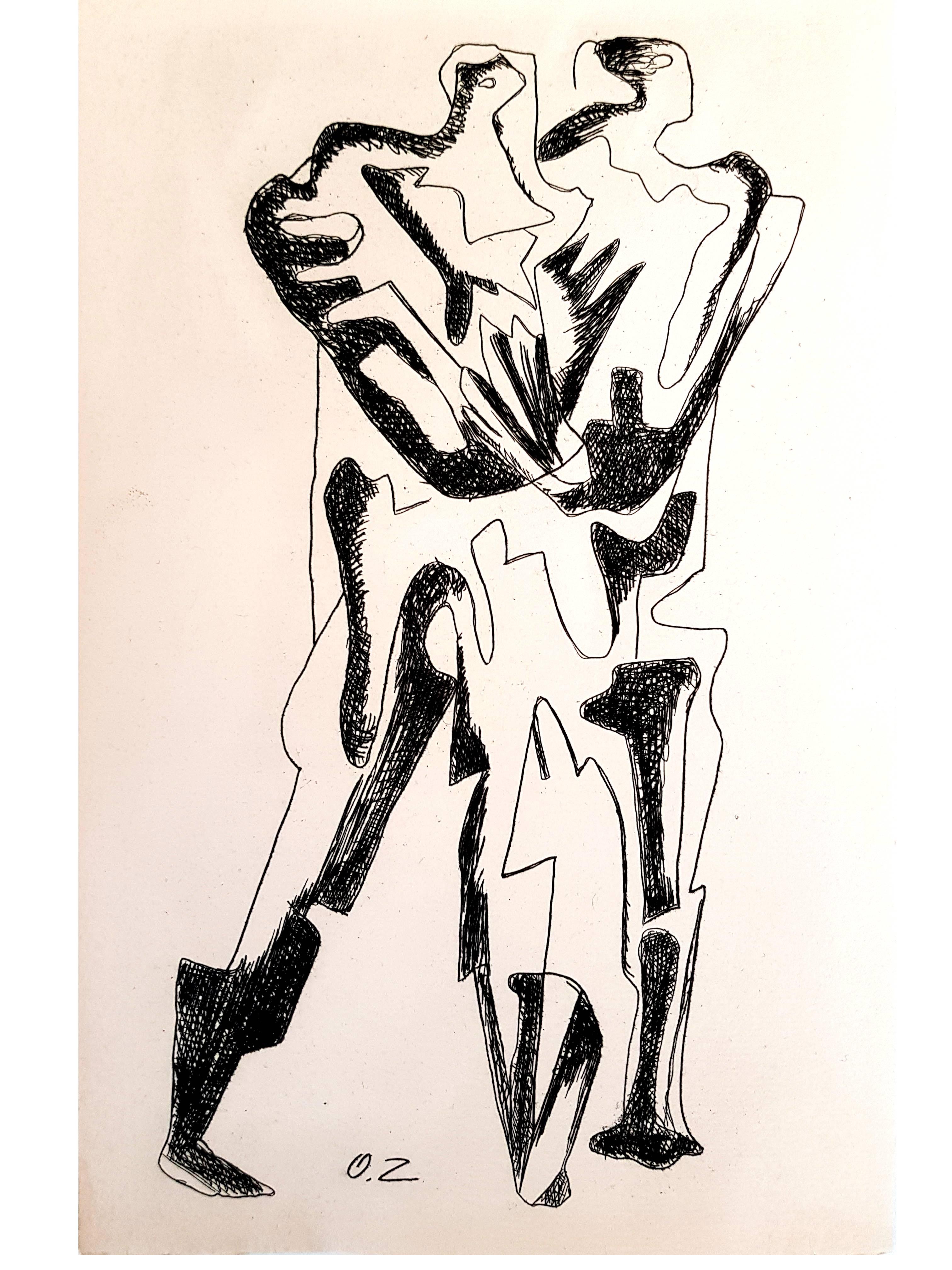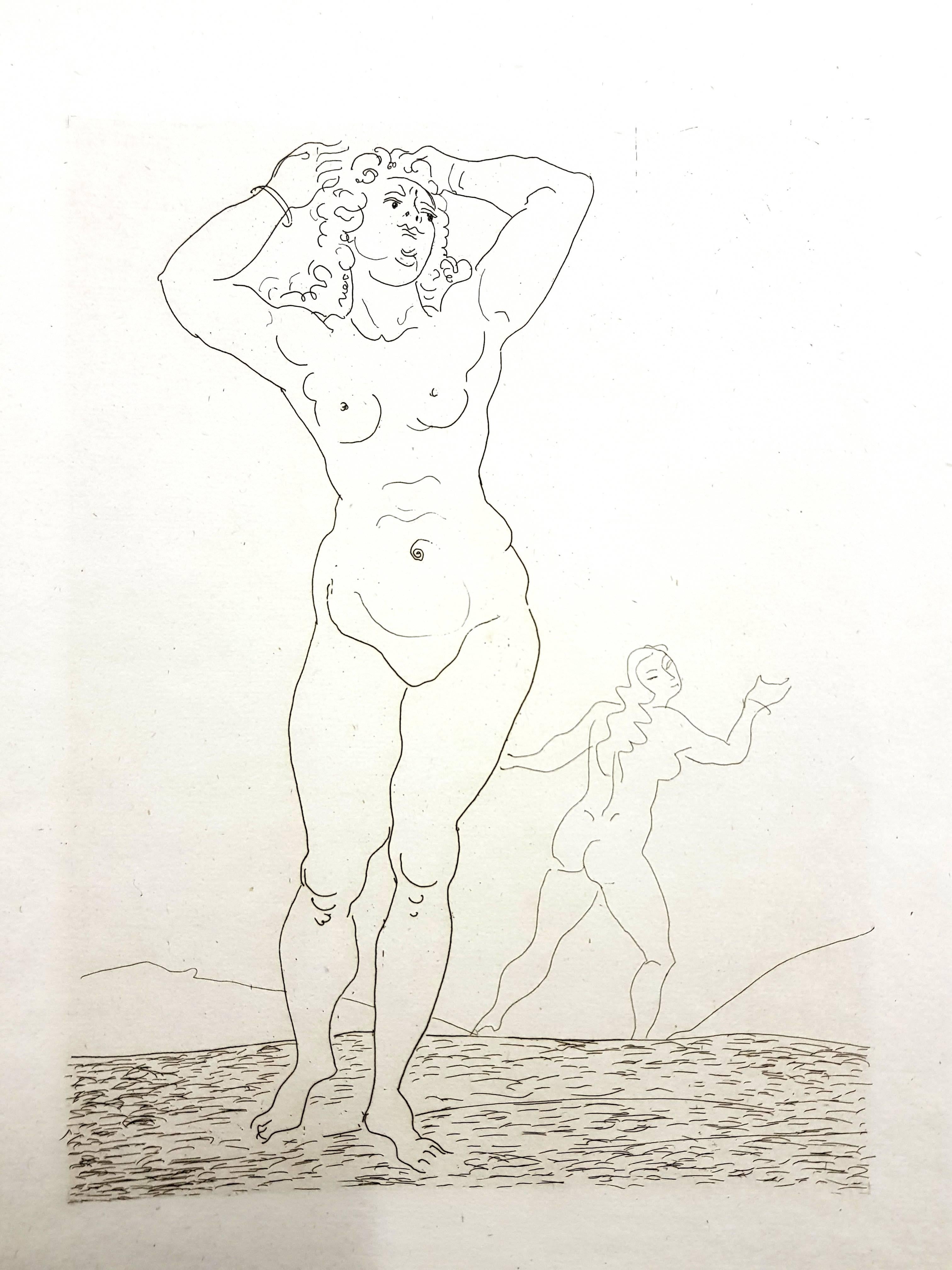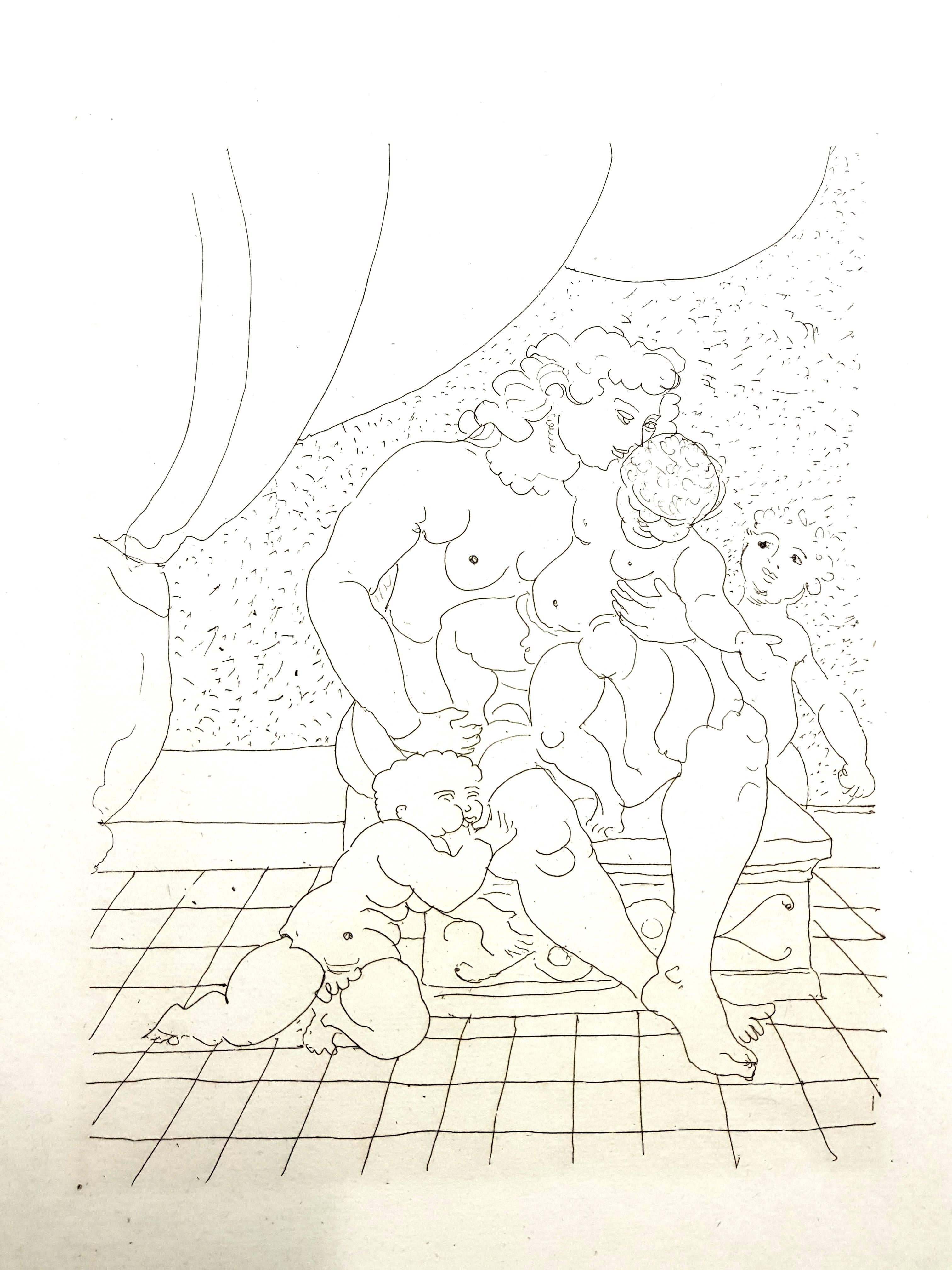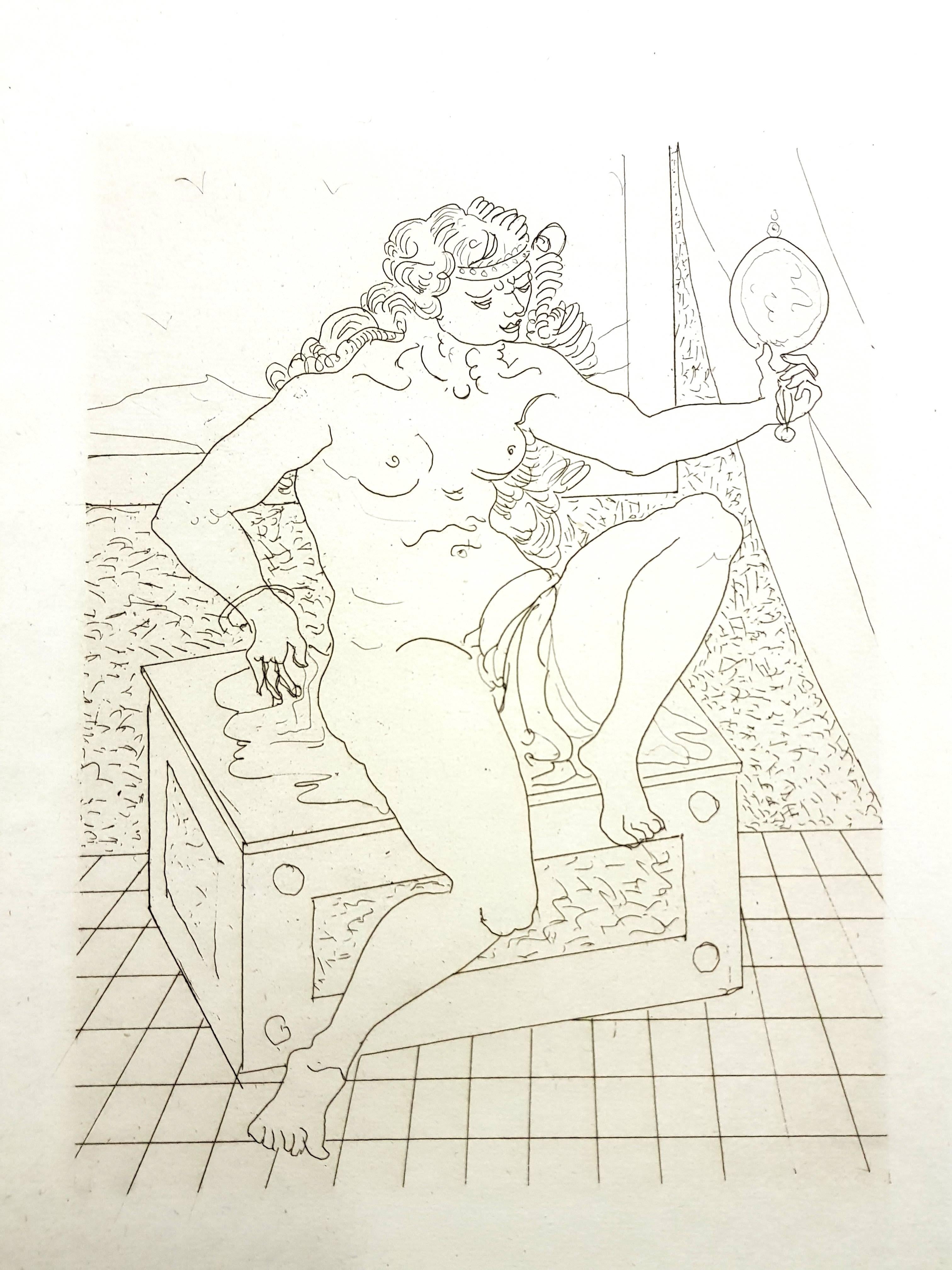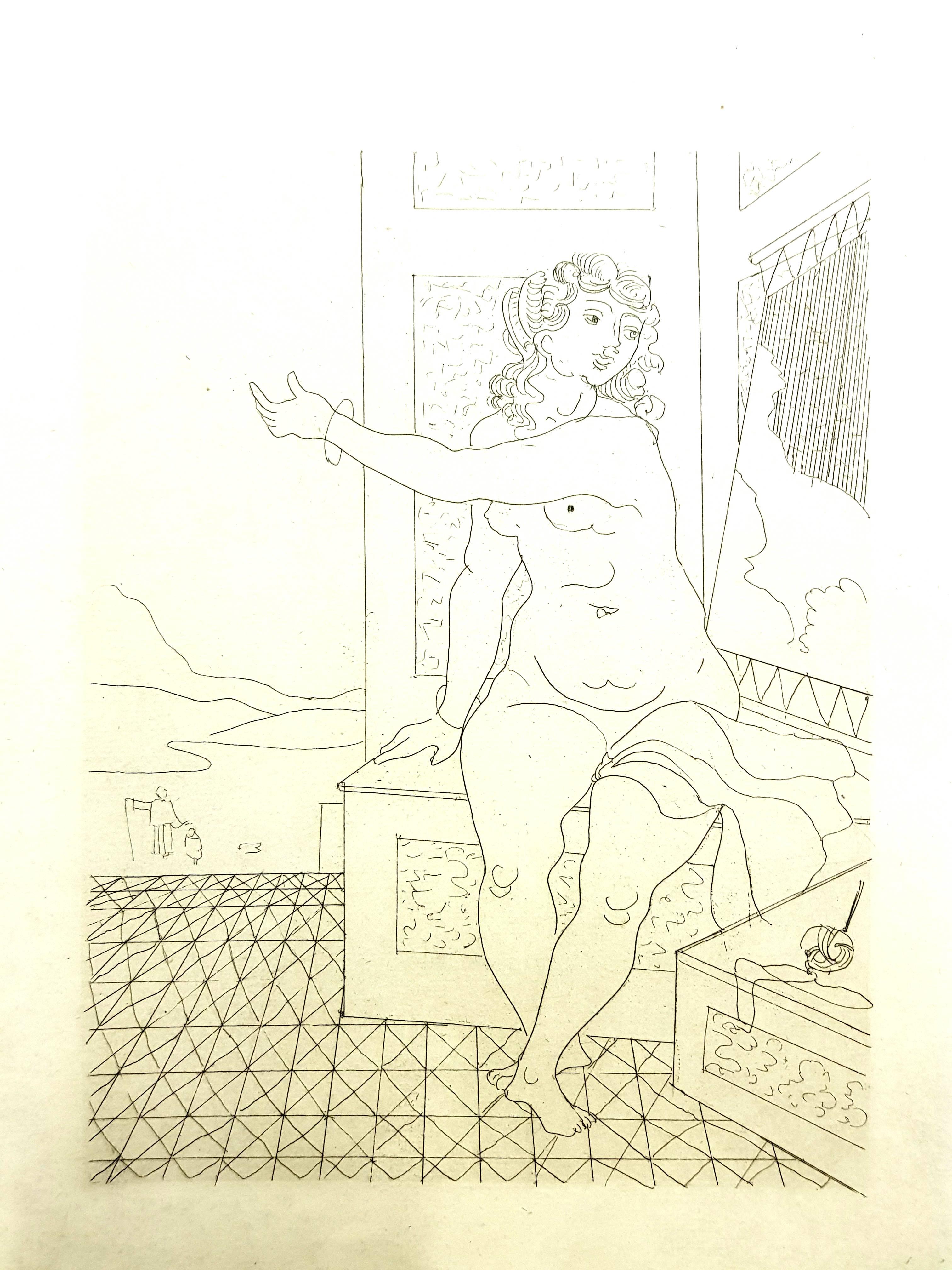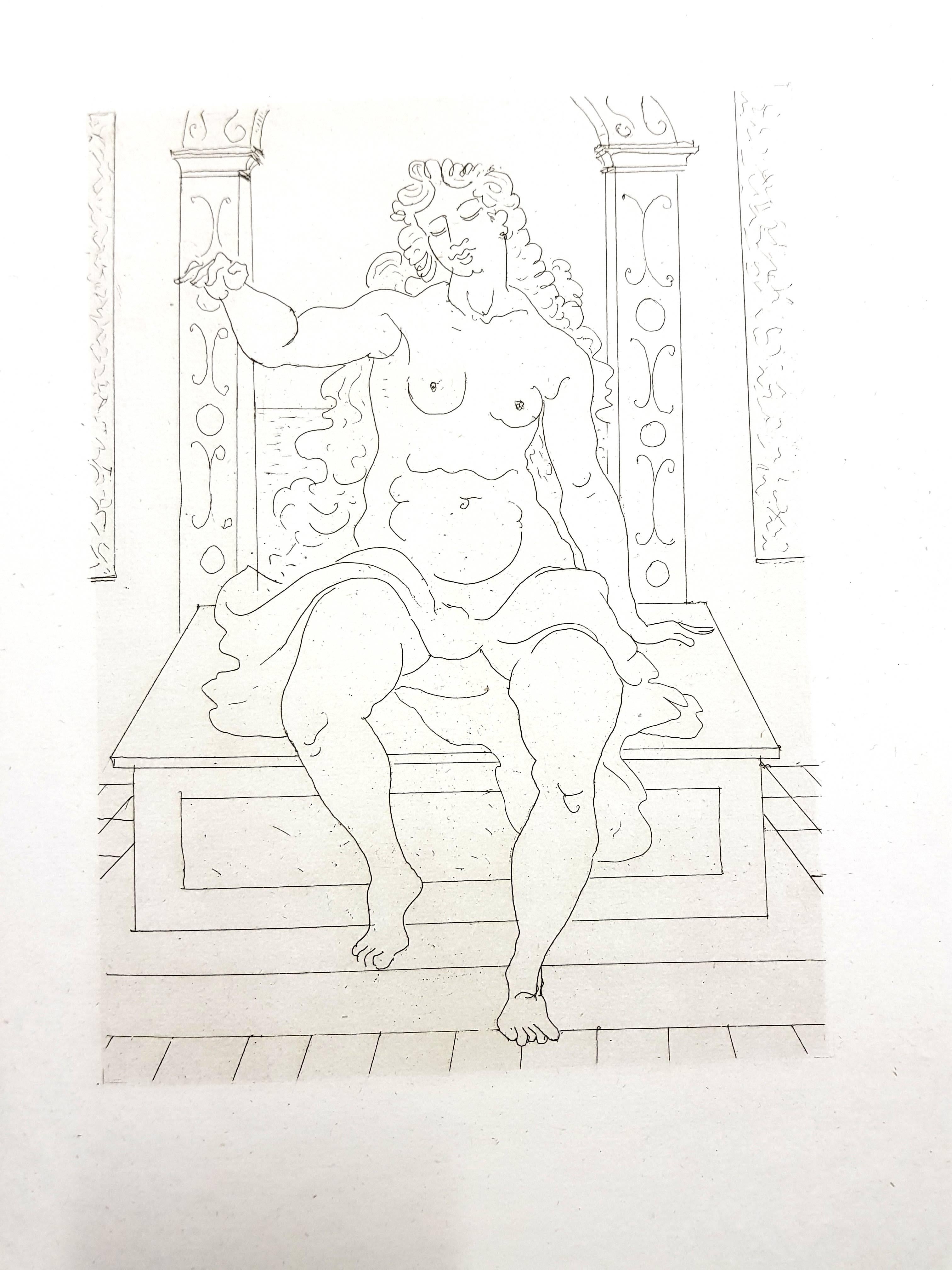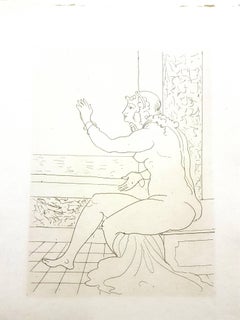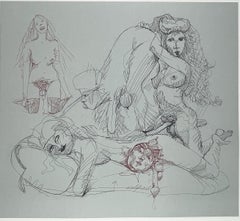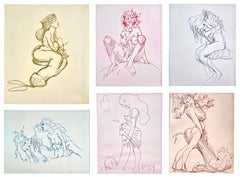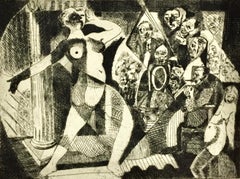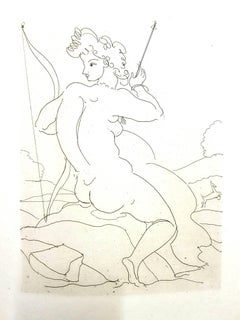
André Derain - Ovid's Heroides - Original Etching
View Similar Items
Want more images or videos?
Request additional images or videos from the seller
1 of 7
André DerainAndré Derain - Ovid's Heroides - Original Etching1938
1938
About the Item
- Creator:André Derain (1880-1954, French)
- Creation Year:1938
- Dimensions:Height: 12.6 in (32 cm)Width: 9.85 in (25 cm)Depth: 0.4 in (1 cm)
- Medium:
- Movement & Style:
- Period:
- Condition:
- Gallery Location:Collonge Bellerive, Geneve, CH
- Reference Number:1stDibs: LU16122271561
About the Seller
4.9
Platinum Seller
These expertly vetted sellers are 1stDibs' most experienced sellers and are rated highest by our customers.
Established in 2015
1stDibs seller since 2015
908 sales on 1stDibs
Typical response time: 1 hour
More From This SellerView All
- Ossip Zadkine - Ultimate Step - Original EtchingBy Ossip ZadkineLocated in Collonge Bellerive, Geneve, CHEtching monogrammed in the plate. Illustration for a Robert Ganzo's poem "Lespugue" Editions Marcel Sautier, Paris, 1966. Conditions: Good Conditions Dimensions: 25,5 x 16,5 cm. Vellum paper Référence Czwiklitzer n°55. 1890 Zadkine was born on the 14th of July in Vitebsk, a city in Belarussia, on the Dvina. His father Ephime teaches classical languages at the local seminar. His mother Sophie Lester descended from Scots, who emigrated at the time of Peter the Great. 1905 His parents send him to Sunderland, in the North of England, where his mother’s family lives. He studies English and attends modelling courses at the local Art School. 1905-1909 He travels to London without his parents permission where he attends courses at the Regent Street Polytechnicum. In order to earn his living, he plans to work with a stonecutter. He visits the British Museum and studies classical sculpture there. Returns to Smolensk where he produces his first sculpture. Goes back to London. 1909-1910 Zadkine settles in Paris and studies in the ecole Nationale des Beaux-Arts. Finds a workshop in a building called La Ruche, in the XVe arrondissement. 1911 Zadkine presents statues and drawings at the annual Salon d’Automne and at the Salon des Indépendants. It is the ‘cubists’ who draw his attention in Paris. Is essentially close to Russian students who get together in a cafe of the ‘Quartier Latin’. Has himself called Joe Zadkine until 1914. 1912-1913 Finds a room in the neighbourhood of Montparnasse, in the rue de Vaugirard. Studies Roman sculpture. Zadkine is immortalized by his neighbour, photographer Marc Vaux, in his new workshop. Meets Brancusi, Guillaume Apollinaire, Jacques Lipchitz, Pablo Picasso, Antoine Bourdelle, Leopold Survage and Robert Delaunay. Henri Matisse visits Zadkine’s workshop. 1914-1915 Exhibition at the Freie Sezession in Berlin, at De Onafhankelijken in Amsterdam (Holland) and at the Allied Artists Association in London. Thanks to collector Paul Rodocanachi, he can settle in a workshop in the rue Rousselet. Becomes friends with Modigliani. 1916-1917 Works as a stretcher-bearer on the front. Produces drawings and watercolours dealing with war. Zadkine is discharged in 1917. He says he is ‘bodily and spiritually’ ruined by the war. After his stay in the Epernay hospital he recovers in Bruniquel, in the southwest of France. 1918-1919 Makes a series of 20 war etchings...Category
1960s Modern Figurative Prints
MaterialsEtching
- André Derain - Ovid's Heroides - Original EtchingBy André DerainLocated in Collonge Bellerive, Geneve, CHAndré Derain - Ovid's Heroides Original Etching Edition of 134 Dimensions: 32 x 25 cm Ovide [Marcel Prevost], Héroïdes, Paris, Société des Cent-une, 1938 Andre Derain was born in 1...Category
1930s Modern Nude Prints
MaterialsEtching
$1,066 Sale Price35% Off - André Derain - Ovid's Heroides - Original EtchingBy André DerainLocated in Collonge Bellerive, Geneve, CHAndré Derain - Ovid's Heroides Original Etching Edition of 134 Dimensions: 32 x 25 cm Ovide [Marcel Prevost], Héroïdes, Paris, Société des Cent-une, 1938 Andre Derain was born in 1...Category
1930s Modern Nude Prints
MaterialsEtching
$1,066 Sale Price35% Off - André Derain - Ovid's Heroides - Original EtchingBy André DerainLocated in Collonge Bellerive, Geneve, CHAndré Derain - Ovid's Heroides Original Etching Edition of 134 Dimensions: 32 x 25 cm Ovide [Marcel Prevost], Héroïdes, Paris, Société des Cent-une, 1938 Andre Derain was born in 1...Category
1930s Modern Nude Prints
MaterialsEtching
$1,066 Sale Price35% Off - André Derain - Ovid's Heroides - Original EtchingBy André DerainLocated in Collonge Bellerive, Geneve, CHAndré Derain - Ovid's Heroides Original Etching Edition of 134 Dimensions: 32 x 25 cm Ovide [Marcel Prevost], Héroïdes, Paris, Société des Cent-une, 1938 Andre Derain was born in 1880 in Chatou, an artist colony outside Paris. In 1898, he enrolled in the Academie Carriere in Paris where he met Matisse. He attended art school and in 1900, set up a studio with Maurice deVlaminck. After his military service from 1900-1904, Derain exhibited his work at the Salon des Independants and then at the Salon d'Automne with Matisse, Vlaminck and others, thus creating the movement of Fauvism.He worked with Henri Matisse in 1905 at Collioure, and participated in the 1905 Salon d’Automne with Matisse, Vlaminck, and Braque, the exhibition in which this group was labeled as Fauves, or Wild Beasts. Along with Vlaminck, Derain was one of the first artists to collect the tribal art of Africa which was influential to many of the artists of the early 20th century. In 1906, Derain met Picasso and his dealer, who purchased Derain's entire studio, creating newfound financial success. During this time, he was hired for the illustrations for works by Guillaume Apollinaire and Andre Breton. After World War I, his friend's Cubism movement affected his art, along with influence from Classicism and African Art. Derain stayed in Paris during most of the Occupation, where he was esteemed by the Nazis because of his artistic integrity. Hitler's Foreign Minister commissioned him to paint a family portrait, but he politely refused. His popularity began to decline after the war because of disagreement over new artistic movements. He later lost most of his eyesight due to illness, which may have been the reason he was hit by a truck in 1954, dying from shock at the age of 74. Derain’s Fauve paintings are typically bright with intense color. Influenced by the work of Cézanne as well as the early Cubist paintings of Picasso and Braque’s, Derain’s style changed and by 1912, the paintings became more traditional and structured. For the remainder of his career, he continued to investigate different compositional methods including the perspective of Cézanne and the pointillism of Seurat. He also designed ballet sets and made a number of sculptures. At the turn of the century, Andre Derain exhibited at the radical Fauve Salon d’Automne (1905) and was one of the founding members of the Fauvist movement together with his life-long friends Matisse and Vlaminck. The works he produced in this period, often under the guidance of Matisse, have been counted among the masterpieces of Fauvism. From around 1918, Derain turned his back on the avant-garde and had begun to explore some of the more traditional genres of Western art, including landscapes. His main source of inspiration once the Fauves group had dispersed was found in the Louvre, where he admired the early Renaissance works in particular. Talking of his frequent visits there, he once said, ‘That seemed to me then, the true, pure absolute painting.’ His work evolved through many styles and, most significantly, turned back to the past, particularly after 1922 when Lenin had publicly pronounced his disdain for abstract art. Derain built up an immense and fascinating collection of paintings, sculpture and objets d’art throughout his life which aided his experimentation and was reflected in his work between 1930 and 1945. During these years, his painting technique displayed the most avenues of invention, using a repertoire of primitivist motifs. His eclectic collection was constantly changing. In 1930 he sold his African collection in exchange for bronzes of antiquity and the Renaissance which indicated a real change of interest in the objects, as did his later pursuit of Greek ceramic painting and his enthusiasm for grand cycles of literary and antique themes...Category
1930s Modern Nude Prints
MaterialsEtching
$1,066 Sale Price35% Off - André Derain - Ovid's Heroides - Original EtchingBy André DerainLocated in Collonge Bellerive, Geneve, CHAndré Derain - Ovid's Heroides Original Etching Edition of 134 Dimensions: 32 x 25 cm Ovide [Marcel Prevost], Héroïdes, Paris, Société des Cent-une, 1938 Andre Derain was born in 1880 in Chatou, an artist colony outside Paris. In 1898, he enrolled in the Academie Carriere in Paris where he met Matisse. He attended art school and in 1900, set up a studio with Maurice deVlaminck. After his military service from 1900-1904, Derain exhibited his work at the Salon des Independants and then at the Salon d'Automne with Matisse, Vlaminck and others, thus creating the movement of Fauvism.He worked with Henri Matisse in 1905 at Collioure, and participated in the 1905 Salon d’Automne with Matisse, Vlaminck, and Braque, the exhibition in which this group was labeled as Fauves, or Wild Beasts. Along with Vlaminck, Derain was one of the first artists to collect the tribal art of Africa which was influential to many of the artists of the early 20th century. In 1906, Derain met Picasso and his dealer, who purchased Derain's entire studio, creating newfound financial success. During this time, he was hired for the illustrations for works by Guillaume Apollinaire and Andre Breton. After World War I, his friend's Cubism movement affected his art, along with influence from Classicism and African Art. Derain stayed in Paris during most of the Occupation, where he was esteemed by the Nazis because of his artistic integrity. Hitler's Foreign Minister commissioned him to paint a family portrait, but he politely refused. His popularity began to decline after the war because of disagreement over new artistic movements. He later lost most of his eyesight due to illness, which may have been the reason he was hit by a truck in 1954, dying from shock at the age of 74. Derain’s Fauve paintings are typically bright with intense color. Influenced by the work of Cézanne as well as the early Cubist paintings of Picasso and Braque’s, Derain’s style changed and by 1912, the paintings became more traditional and structured. For the remainder of his career, he continued to investigate different compositional methods including the perspective of Cézanne and the pointillism of Seurat. He also designed ballet sets and made a number of sculptures. At the turn of the century, Andre Derain exhibited at the radical Fauve Salon d’Automne (1905) and was one of the founding members of the Fauvist movement together with his life-long friends Matisse and Vlaminck. The works he produced in this period, often under the guidance of Matisse, have been counted among the masterpieces of Fauvism. From around 1918, Derain turned his back on the avant-garde and had begun to explore some of the more traditional genres of Western art, including landscapes. His main source of inspiration once the Fauves group had dispersed was found in the Louvre, where he admired the early Renaissance works in particular. Talking of his frequent visits there, he once said, ‘That seemed to me then, the true, pure absolute painting.’ His work evolved through many styles and, most significantly, turned back to the past, particularly after 1922 when Lenin had publicly pronounced his disdain for abstract art. Derain built up an immense and fascinating collection of paintings, sculpture and objets d’art throughout his life which aided his experimentation and was reflected in his work between 1930 and 1945. During these years, his painting technique displayed the most avenues of invention, using a repertoire of primitivist motifs. His eclectic collection was constantly changing. In 1930 he sold his African collection in exchange for bronzes of antiquity and the Renaissance which indicated a real change of interest in the objects, as did his later pursuit of Greek ceramic painting and his enthusiasm for grand cycles of literary and antique themes...Category
1930s Modern Nude Prints
MaterialsEtching
$1,066 Sale Price35% Off
You May Also Like
- Four Figures and a Head, on Giant Phallus by Claes Oldenburg erotic nude sceneBy Claes OldenburgLocated in New York, NYThis sensuous and playful scene is characteristic of Oldenburg’s printmaking ouevre: a veritable heap of women displaying various expressions of joy and come-hither coquettishness. T...Category
1970s Modern Figurative Prints
MaterialsEtching
- Claes Oldenburg mythological Erotic Fantasy Suite print set of 6 medusa mermaidBy Claes OldenburgLocated in New York, NYThese erotic etchings depict mythological and fantasy creatures as striking nudes. A host of sensuous and shocking figures include a mermaid, Medusa, and women in both jubilant and p...Category
1970s Modern Figurative Prints
MaterialsEtching
- Irving Guyer, Strip ActBy Irving GuyerLocated in New York, NYIrving Guyer captured the bustle of the city in a modernist style. This print is signed and titled in pencil.Category
Mid-20th Century Modern Figurative Prints
MaterialsEtching
- "Party Girl" Contemporary limited edition etchingBy Ian LaurieLocated in Brecon, PowysSigned Limited Edition Etching from Artists Studio. 12 of 25 Image 11" x 7" Matted 16" x 12" Ian Laurie was born in 1933 and is a self taught artist who made the transition from i...Category
Early 2000s Modern Nude Prints
MaterialsEtching
$200 Sale Price20% Off - SkatersBy Eric GillLocated in Storrs, CTEngraving on copper. Physick catalog 368 state ii. 4 3/8 x 4 1/4 (sheet 13 1/16 x 9 7/8). Second state of the engraving, as indicated by the ballet skirts...Category
Early 20th Century Modern Figurative Prints
MaterialsEngraving, Etching
$500 Sale Price33% Off - Figure CompositionBy Martin ShortisLocated in Storrs, CTFigures Composition. 1984. Etching and drypoint. 6 1/2 x 5. Three states, two artist's proofs. Each printed on cream wove paper. Each titled, dated, and signed 'Shortis N[ew] Y[ork]'...Category
Late 20th Century Modern Figurative Prints
MaterialsEtching
$150 Sale Price50% Off
